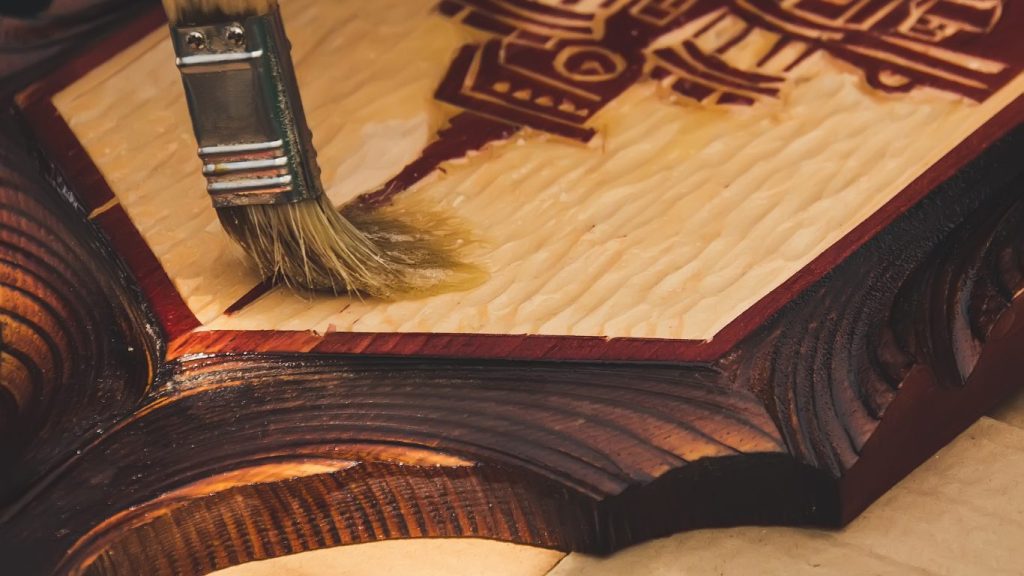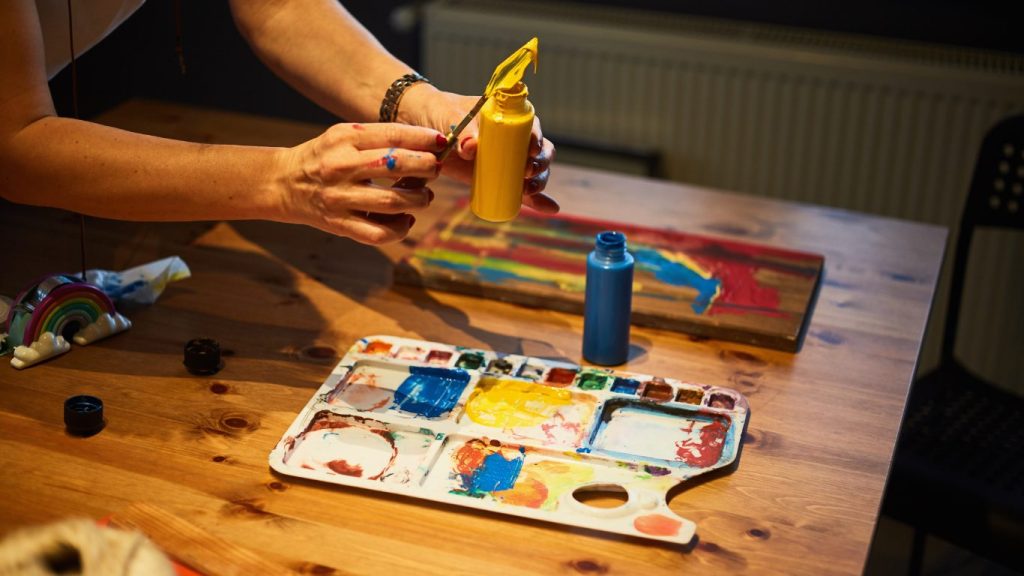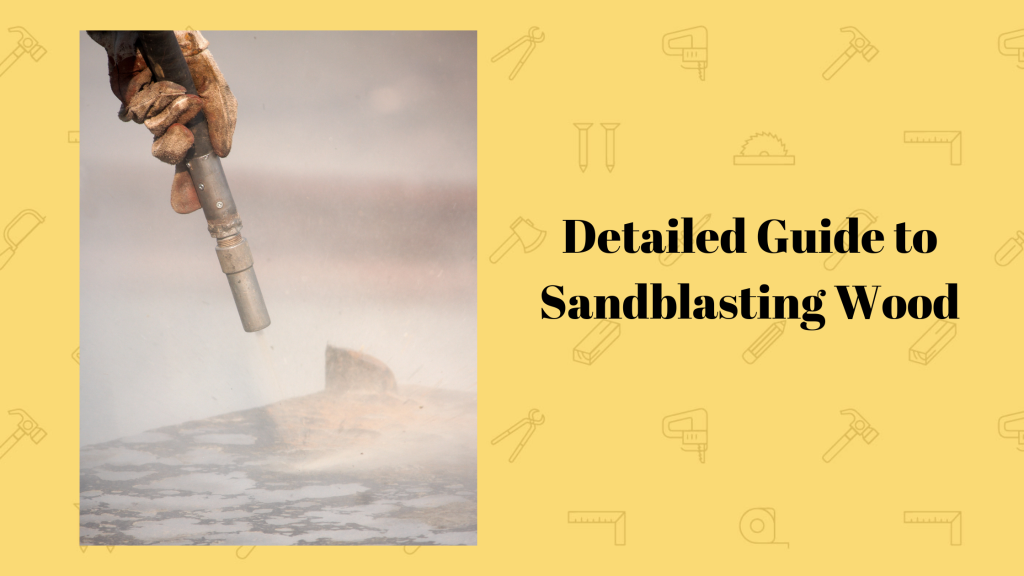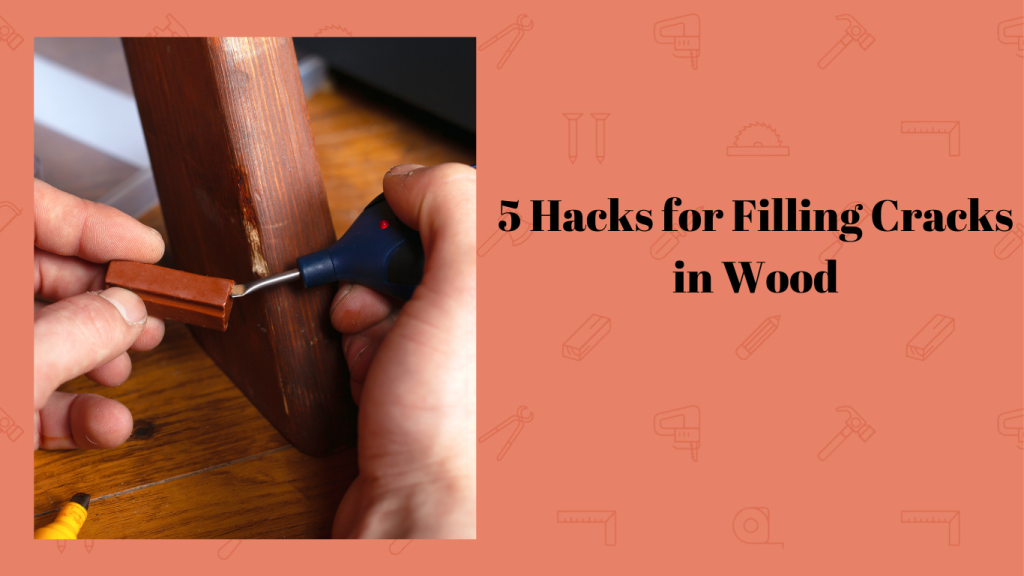Like many woodwork problems, the question “Can you paint over stain?” has an easy answer. But it’s not so easy to execute. However, as always, we’re here to guide you through the process.
In my 15+ year career in woodworking, I’ve worked on staining plywood, maple, and other types of wood, as well as applying paint to all kinds of woodwork. On the basis of this knowledge, here’s a guide on everything you need to know about painting over stained wood.
Can You Paint Over Stain?
To put it simply, yes, you can paint over stained wood. Painting is actually a common method of breathing new life into stained furniture. It’s just like makeup for your wood! So, if you have stained wood that needs a do-over, rest easy. Painting offers your woodwork a second lease of life.
But hold your horses. Unless you plan on damaging your wood (we assume you don’t), then it’s a bit more complicated than simply pouring paint over it. Here are some more tips to make sure you do it right.

Prepare the Wood Surface Before Painting
The first step in preparing to paint stained furniture is determining what kind of stain was used (oil or water-based). Experienced woodworkers can often tell the difference just by looking at the wood. Oil-based stains tend to have a richer and deeper color, while water-based stains are lighter and emit less odor.
But we’ll assume you’re not a seasoned woodworker and need some help telling them apart. The easiest method to use for beginners is the water drop test. Sprinkle a little water on the surface of the wood; after about thirty seconds to a minute, if it beads up, then the stain is oil-based because oil repels water. If the wood absorbs the water, then it’s a water-based stain.
Next, clean the surface of the wood with soapy water to remove dust and debris. If your wood has an oil-based stain, a stronger cleaning agent like trisodium phosphate (TSP) should be used. Then gently sand over the wood – this is just to smoothen the surface, so take it slow and easy. You don’t want to leave your wood with battle scars.
The final part of your prep process is applying deglosser to the surface. Deglosser (also called liquid sandpaper) helps prepare the wood for a new finish. Leave the deglosser to dry for 8-10 minutes. At this point, your wood should be ready for its makeover, granted you followed the instructions above and didn’t sand your wood with the aggression of a squirrel digging a burrow.
Painting Over Water Stain
With the prep steps complete, purchase a water-based latex primer for stained wood. The primer helps strengthen the paint. Think of it as the foundation before applying makeup. Ensure the primer is evenly applied and covers the surface of the wood. Then, wait for the primer to dry off (most primers dry within 30 – 40 minutes after applying).
Once the primer is properly dried, apply two coats of high-quality latex paint over the wood using a good brush and a roller. Make sure the first layer dries (8-10 hours) before applying the top coat of paint. Leave the paint for 24 hours to dry off. And with that, the magic is complete; you’ve successfully painted over water-stained wood. Congrats!

Painting Over Oil Stain
Painting over oil stain isn’t much different. Remember to wipe the stained surface thoroughly with a soft sponge dipped in trisodium phosphate before sanding. Apply a bonding primer over the wood and wait for it to dry. Ensure you carefully follow the product directions and always work in a well-ventilated area. Why? Because inhaling chemicals = harmful to your health!
Finally, apply two coats of paint to the wood, ensuring the first layer dries up before adding the second coat. After about 24 hours, your paint should be dried properly, and your wood looking brand new.
What Else Should I Know?
Not all primer products are the same, and the difference between quality primers and sub-par primers can be made painfully obvious when painting over oil stains. Ensure you use a bonding primer for oil stains, as it has a blocking quality that prevents the stain from seeping through the layers of paint applied over it.
Rounding Up…
To answer the day’s big question, “can you paint over stain,” the answer is yes. But as is often the case in woodwork, it’s easier said than done. Painting with wood stain is a breeze for experts, but expect to create quite a mess on your first few tries.
However, after some tired hours and a body covered in paint and dust, your wood will have a rewarding new look and be ready to dazzle all over again!
*This post may contain affiliate links. Please see my disclosure to learn more.



